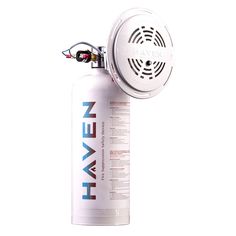Richard Tools Scraper

Scrapers Scrapers If some of our other categories were large, then this one is huge! At one time the mainstay of the turner's armoury, especially during the 'dark ages' of the turning craft between the thirties an d the seventies, these largely unsophisticated tools still perform a vital role in the finishing of a wide range of faceplate turning projects. There are scrapers for bowls and scrapers for boxes; scrapers for platters and scrapers for shearing. But you'll find there are no scrapers for spindles: that just isn't the way of it! As a general guideline, we would suggest that you use the largest, heaviest, strongest scraper that will fit into/onto your workpiece. That way lies stability and the freedom from ruinous vibration. With such a wide range of scrapers on offer, you may find the following list helpful: clicking on the relevant title will take you straight to the chosen section of the lists.
If you simply want to familiarise yourself with what this range offers, then browse down this very long page. Click on this icon to view an enlarged photo in a separate browser window. (Left) For shapes like this, look in the section. (Diag E) (Diag F) These are the shapes you'll find in the section Other curves, in this style, are the subject of the section (Diag G) In addition to these, you can also find, designed scrapers and designed scrapers. For, you should look at the page.
Round Nose Scrapers: If you're turning bowls, then you certainly need to be looking in this section. For cleaning out the final ripples inside a bowl there is nothing to beat a well-sharpened heavy duty scraper - unless you can get a perfect finish off the gouge and I've only ever seen that in books. The designs here vary a little between manufacturer and model.
Worldwide Scraper Training DAPRA. Advanced scraping on machine tools. The instructor of these classes is Richard King, a Master Scraper and Machine Builder who.
In the lighter scrapers, up to 1-1/4', the Taylor designs have a fuller curve, approaching a half-round (see, above) whilst the Sorby are radiused but far from semi-circular in plan (see, above). The heavy duty scrapers, or as Sorby term them 'extra-heavy duty scrapers' show further disparities: the Taylor HS15 is a full semicircular profile (as their HS16 is more correctly termed 'domed' which is also the shape of the Sorby 8004LH.
Like many others of today's tools, the Taylor Heavy Duty versions owe their origins to Peter Child, a father of the turning renaissance. Also check out the heavy duty bowl scrapers produced by and. Curved Scrapers: These are similar to the tools shown in the preceding section, but with asymettric profiles. The Sorby designs are two left hand curved tools, the 828H and the 8008LH as in, above and a right-handed version the 8007LH for outboard turning. The Taylor designs are both from their heavy duty Peter Child Design series and are a left-hand (HS17) and a right-hand/outboard (HS18) style as shown in, above. Of this whole group, only the Sorby 828H is standard weight: all of the others are the very desirable Extra Heavy Duty weight. In addition to these designs of curved scrapers, both the and sections include curved scrapers.
Also check out the heavy duty bowl scrapers produced by and. *NB: Prices quoted in pounds sterling. Value Added Tax will be added to invoices to EU residents unless a valid VAT registration number is quoted when ordering. Round Side Cutting Scrapers:, above, indicates the shape of these tools.
They are at their best when working in goblets, eggcups, chalices and similar vessels as well as in bowl turning. The two examples here are standard weight tools made of 1/4' steel. John Deere Service Advisor Keygen Download. Given a bit of judicious re-grinding, it is possible to produce from one of these shapes, scrapers that can reach almost anywhere. Straight-Edged Scrapers: This large group includes both square scrapers and skew scrapers, the difference being that a square scraper is cut square across at 90 degrees to the tool axis whilst a skew scraper has its edge ground to make an angle of around 20 degrees to the tool axis.
All of the standard weight models have straight across grinds but in the Heavy Duty table, all are skew ground except the Taylor HS14. These tools are especially useful when finishing the surface of platters, trays and tabletops, but do need a degree of care in use to avoid leaving grooves behind. In this respect the skew designs are easier to handle than the straight grinds. The Taylor HS14 is ground square across.